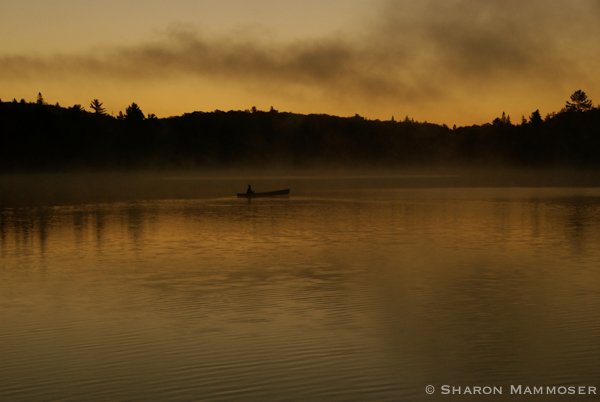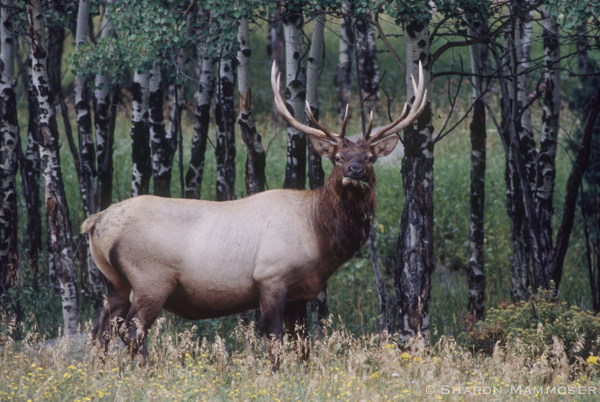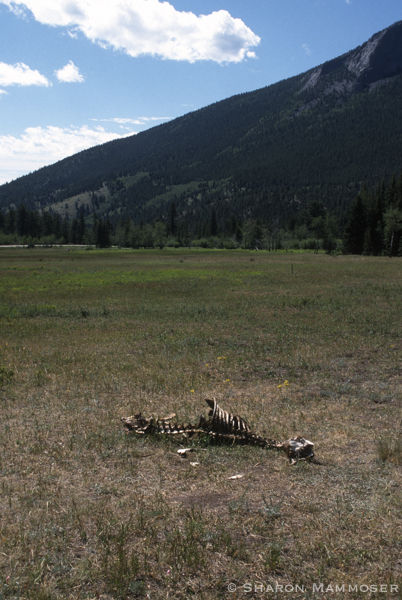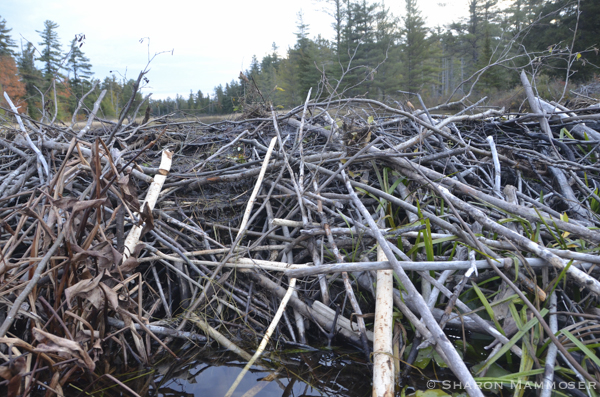 When I was a teenager, my parents took my two younger brothers and I to a vast wilderness park in eastern Canada called Algonquin. Most of our vacation there was spent “car camping” beside lakes in the front country, but for two nights, we ventured into the wilderness with two canoes and lots of gear. I can still remember being awakened in the night by the calls of loons… and the howls of wolves. And my feeling of pure joy and wonder. Hearing those sounds THRILLED me! Nothing is more symbolic of wilderness.
When I was a teenager, my parents took my two younger brothers and I to a vast wilderness park in eastern Canada called Algonquin. Most of our vacation there was spent “car camping” beside lakes in the front country, but for two nights, we ventured into the wilderness with two canoes and lots of gear. I can still remember being awakened in the night by the calls of loons… and the howls of wolves. And my feeling of pure joy and wonder. Hearing those sounds THRILLED me! Nothing is more symbolic of wilderness.
Not everyone would feel similarly, as for many, wolves play a much more sinister role. In our culture, there is a lot of fear and hatred towards wolves as well as plenty of myths and stories portraying the wolf as “the big, bad predator.”
So let’s talk about wolves: (And for the record let me just say I have never seen a wolf in the wild and have no photos of them)
 1.We often say that wolves are members of the dog family, but actually, dogs are members of the wolf family. All domestic dogs descended from wolves. Gray and timber wolves are the same thing–their latin name is Canis lupus. And they don’t have to be gray–they can be black, white, brown, gray or any combination in between.
1.We often say that wolves are members of the dog family, but actually, dogs are members of the wolf family. All domestic dogs descended from wolves. Gray and timber wolves are the same thing–their latin name is Canis lupus. And they don’t have to be gray–they can be black, white, brown, gray or any combination in between.
2. In the United States we have two kinds of wolves, timber and red wolves. Red wolves are smaller and live only in eastern North Carolina–today there are about 50 red wolves.
3.There are 10,000-20,000 gray wolves in Europe, 60,000 in the former Soviet Union and around 60,000 in North America. In the United States, gray wolves live in Alaska, Minnesota, northern Michigan, northern Wisconsin, western Montana, northern Idaho, northeast Oregon and the Yellowstone area of Wyoming. Years ago they were the most widely distributed land mammal.

4. Wolves are carnivores. They feed on primarily on large animals such as deer, elk moose,bison,caribou, Dall sheep, bighorn sheep, musk oxen but will also eat ptarmigans, hares, beavers, mice, fruit, carrion and other small animals. As is true of other predators, they will take advantage of circumstances, killing what they can.
5. Wolves howl to communicate. (They make other sounds too, like barks, yips, growls, whines) They howl for a variety of reasons including to communicate with other pack members their location, to announce and defend their territory, to gather members before or during a hunt, to celebrate and sometimes, just because they can. Listen to wolves howling:
Audio Player6. Wolves live in tight social groups called packs. Packs consist of the alpha male and female–who generally mate for life– along with a number of family or other members. Pack size varies but is usually between 6-10 animals, though there have been records of packs as large as 20 or 30. (If one in the pair dies, the other will find another mate)
7. Packs live in territories and defend them aggressively. The size depends on many factors such as prey abundance, the nature of the terrain, climate and presence of other predators. In the lower 48, a wolf pack territory is around 100 square miles whereas in Alaska and Canada, the territory of a timber wolf pack could be 300-1000 square miles.
8. Male wolves are 20% larger than females. In the lower 48, females usually weigh in between 50-85 pounds, males 70-110. In Alaska and Canada, males weigh 85-115 pounds.

9. After a gestation of 63 days, the young pups, weighing in at a pound, and born in the den, are blind and deaf. After two weeks, the pups’ eyes open and they will begin hearing about a week later. By the time they are a month old they begin to leave the den and at 6 months, they are close to their full size. Pups are fed by their parents and other pack members, who consume food elsewhere and then regurgitate it for them.
10. If you live where wolves live, you are not likely to be attacked and eaten! Wolves are shy and elusive, and like many wild animals, avoid people when possible. More people in the United States are killed EACH YEAR by each of the following– dogs, lightning, ATVs, bee stings, cows and car collisions with deer– than have died from wolves in the last 100 years. According to the Centers for Disease Control, in the United States, 4.5-4.7 million people are injured by dog bites each year, with 20-40 of those resulting in death. On average 27,000 dog bites require reconstructive surgery. According to the Weather Channel, lightning causes around 18 deaths EACH YEAR. And get this–according to the Centers for Disease Control, cows kill about 22 people EACH YEAR. In contrast, there are only 2 documented cases of human deaths from wolves in the United States in the 21st century, and both were wolves that had become habituated to humans.

Have you heard about the wolf reintroduction program in Yellowstone National Park? In 1995, 31 wolves from Canada were relocated to the park, despite heavy controversy and protests from local ranchers– who feared the wolves would kill all of their livestock–and hunters–who feared wolves would kill all of the “big game” like elk and moose. Twenty years later, the wolves are doing well, as it seems, is the entire ecosystem, including beavers. Many articles have been written about it and especially, about the ways the wolves have had direct and indirect consequences. Here are a few that I found especially interesting:
- Wolf Reintroduction Changes Yellowstone
- From Science Nation–Are Wolves helping to restore the trees in Yellowstone?
- An award-winning Documentary about the wolf reintroduction in Yellowstone
- And my favorite–a beautiful, but short film, about how the reintroduction of wolves changed Yellowstone.
For more information about wolves, check out the following:
International wolf center in Ely, MN
Great article about wolves by Discovery News
Books about wolves in Yellowstone
A great book about one wolf who became famous in Juneau, Alaska–A Wolf Named Romeo. And HERE is an article about this story and the book by Nick Jans, from Outside Magazine.
And one more! If you have kids or spend time with kids, this is a FABULOUS and funny book–Called The True Story of the 3 Little Pigs, written by A. Wolf. HERE is the book read in a Youtube video. Good for a laugh or two!
What are your thoughts about wolves? Do you like them? Have you ever seen one? Would you like to? As always, I would love to hear from you! Use the comment box to share your thoughts!!

